Percussion
Studying drums and percussion led me to think about how to translate sound impacts into images. In this process of experimentation, I used offset aluminum plates as a matrix. By striking the plates and then inking them to pass through the press, the sound imprints were left printed on the paper.
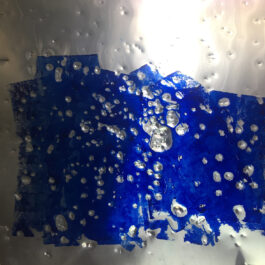
Multiple, modular, scalable
Performing arts, like music, fade with time. Unless recorded. In its various meanings, the word "record" shares the possibility of leaving a reproducible mark on a surface. I began drawing with electric machines on offset aluminum plates. The resulting engraved holes are an experimentation on the chaos and speed of the machines with more or less control depending on the applied force. There are also plates, matrices, that were placed on the pavement during political demonstrations or on avenues, which recorded the passage of traffic. These are trials that attempt to capture time, sound, and movement.
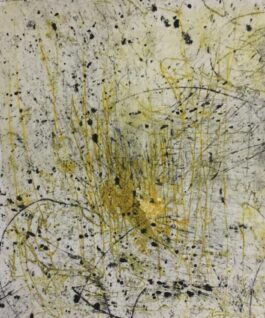
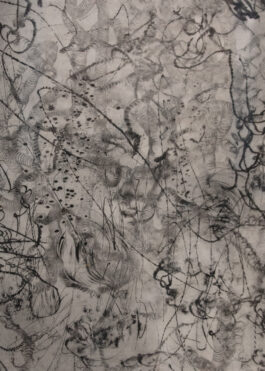
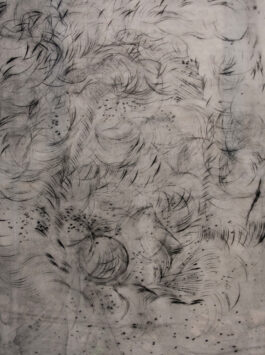
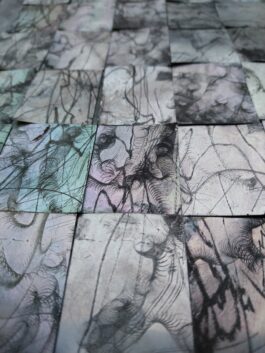
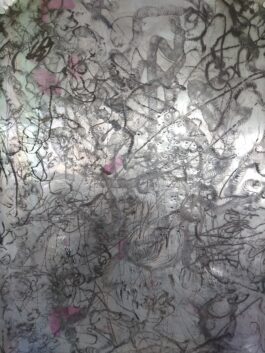
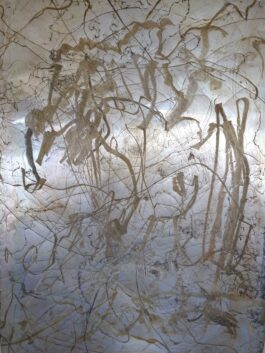
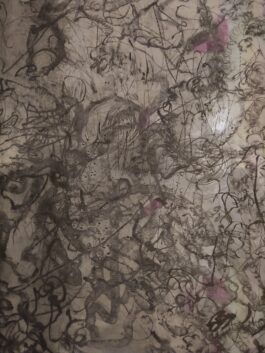
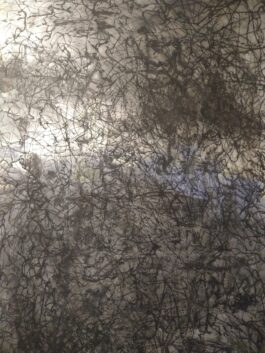
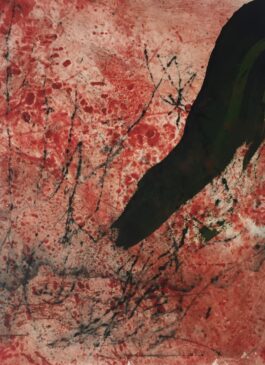

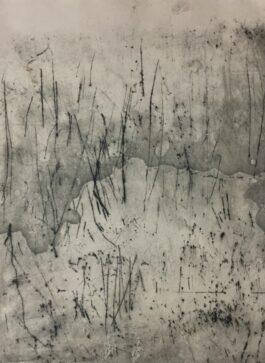
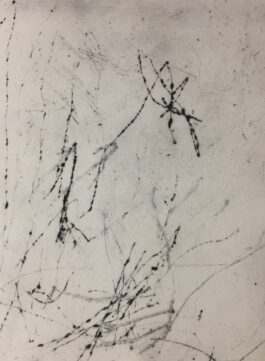
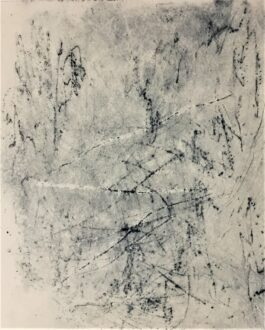
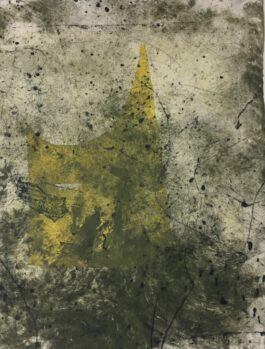
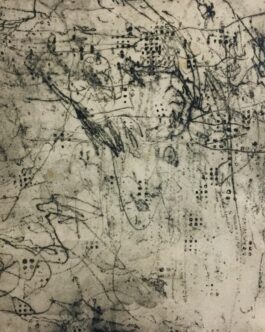
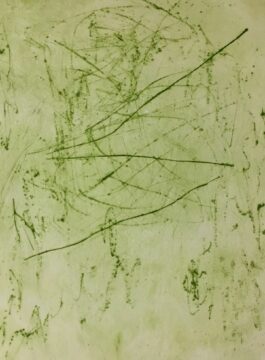
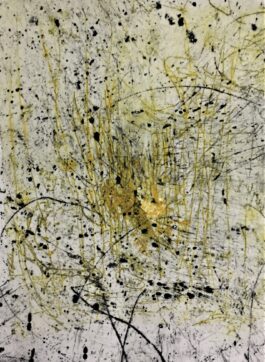
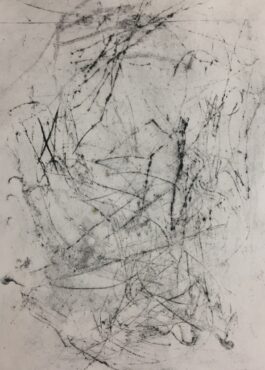
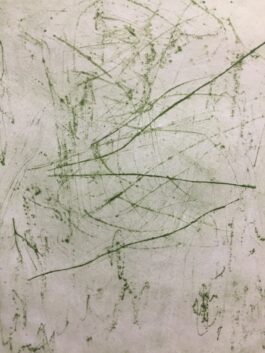
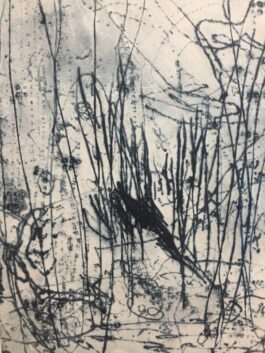
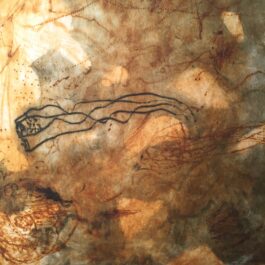
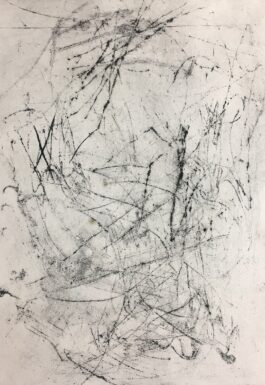
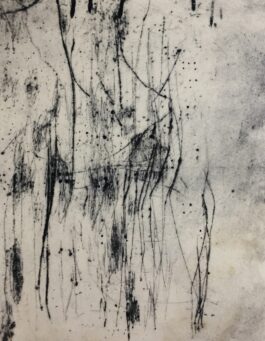

The resulting engraved holes are an experimentation on the chaos and speed of machines, with more or less control depending on the applied force.
These pieces resulted in the creation of costumes that would feature their designs, worn by performers in a narrative arc that finds itself in motion.
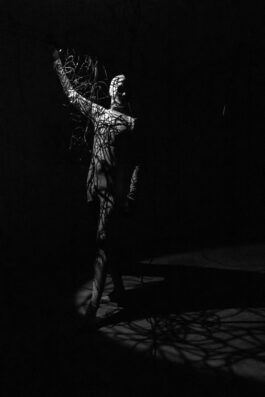
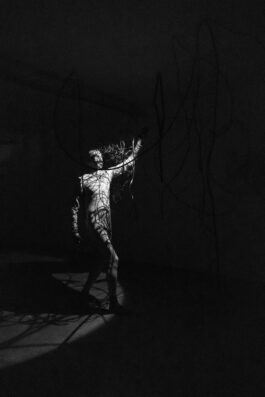
I can imagine now that knocking on Julián's workshop door is not just an ordinary act; it's a rhythm seeking him out and calling to him.
Perhaps in his mind, memories of a life in caves, club in hand and charcoal in hand to paint scenes on stones, wild scenes, come rushing back.
These rhythms, which communicate "a tempo" to all men and in all times, particularly obsess him.
Impulses in the silence of his primitive body, always present, etched on metal sheets, drumming beats that emboss with small hits and scratches, Morse code or writing for the blind.
Ancient sounds of fire, which name him.
Perhaps he knows how to swim in that anguish, and, groping in a dark room, seeks a key or a light, to make visible what he feels.
Colors printed on cotton papers emerge from these plates, like gentle velvets, in a visual narrative of infinite time.
Perhaps that's why, when he closes the door in that cave in Chacarita, the works born from the fire of his drums emit not only reflections of his beats but above all, of himself.
Pablo Scheibengraf, Diana Aisemberg clinic, September 24, 2019, Buenos Aires.
Percussion
Studying drums and percussion led me to think about how to translate sound impacts into images. In this process of experimentation, I used offset aluminum plates as a matrix. By striking the plates and then inking them to pass through the press, the sound imprints were left printed on the paper.

Multiple, modular, scalable
Performing arts, like music, fade with time. Unless recorded. In its various meanings, the word "record" shares the possibility of leaving a reproducible mark on a surface. I began drawing with electric machines on offset aluminum plates. The resulting engraved holes are an experimentation on the chaos and speed of the machines with more or less control depending on the applied force. There are also plates, matrices, that were placed on the pavement during political demonstrations or on avenues, which recorded the passage of traffic. These are trials that attempt to capture time, sound, and movement.
























The resulting engraved holes are an experimentation on the chaos and speed of machines, with more or less control depending on the applied force.
These pieces resulted in the creation of costumes that would feature their designs, worn by performers in a narrative arc that finds itself in motion.


I can imagine now that knocking on Julián's workshop door is not just an ordinary act; it's a rhythm seeking him out and calling to him.
Perhaps in his mind, memories of a life in caves, club in hand and charcoal in hand to paint scenes on stones, wild scenes, come rushing back.
These rhythms, which communicate "a tempo" to all men and in all times, particularly obsess him.
Impulses in the silence of his primitive body, always present, etched on metal sheets, drumming beats that emboss with small hits and scratches, Morse code or writing for the blind.
Ancient sounds of fire, which name him.
Perhaps he knows how to swim in that anguish, and, groping in a dark room, seeks a key or a light, to make visible what he feels.
Colors printed on cotton papers emerge from these plates, like gentle velvets, in a visual narrative of infinite time.
Perhaps that's why, when he closes the door in that cave in Chacarita, the works born from the fire of his drums emit not only reflections of his beats but above all, of himself.
Pablo Scheibengraf, Diana Aisemberg clinic, September 24, 2019, Buenos Aires.